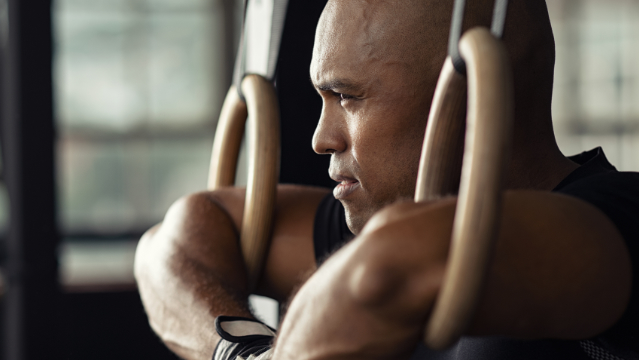Health Blog
Sports periodization can help you peak and avoid overuse injuries

As unfortunate as it is true, injuries and sports go hand in hand. An average of 8.6 million injuries in sports and recreational activities occur each year, which equates to about 34 injuries for every 1,000 individuals that participate. While some minor injuries might only lead to a short gap in participation, others can end seasons and lead to long-term complications if not rehabilitated properly.
Naturally, this causes most athletes to focus their energies not only on excelling in their respective sport, but also on keeping their risk for injury as low as possible.
One of the best ways to accomplish both of these goals is through an approach called sports periodization. The process of periodization involves planning one’s athletic training using a cyclical format that divides the year into specific blocks, with each block having a particular goal and every aspect of training being based on when the athlete needs to be at their optimal performance level. By designating when training intensity should be increased and when recovery is needed, an athlete can effectively increase their physical fitness while reducing their risk for overtraining and overuse injuries.
Macrocycles, mesocycles, and microcycles
In sports periodization, training blocks are referred to as cycles and training is divided into three primary types of cycles: macrocycles, mesocycles, and microcycles. Organizing and planning these cycles is an extremely individual process that should be based on when peak competition takes place in each calendar year, as well as the athlete’s maximum potential, their previous performances, and goals for the year. This means starting with a firm macrocycle in place and then refining it with smaller meso- and microcycles to guide training for month, week, and day.
Macrocycle
- A macrocycle is usually one calendar year, which should be oriented around the period of time an athlete needs to achieve peak performance (ie, the season or span when most competitions will take place) and build to that point
- It includes several phases and incorporates long-term planning designed to ensure the athlete will reach their maximum potential at the right time
- Phase 1: Preparation
- This phase—which can last a month or more—is designed to help a rested athlete slowly return to training in a slow, controlled manner
- Aim for easy, moderate sessions that are comfortable and steady
- Walking, cycling, hiking, and swimming are all great options during this phase
- Phase 2: Fitness base
- Usually lasts several months
- Focuses on improving all major areas of fitness, particularly building strength, power, and endurance
- Should be more general for the entire body and address any weaknesses
- Phase 3: Sport-specific fitness
- Lasts about two months
- Training becomes much more specific during this phase, with a focus on the skills and techniques needed in the respective sport
- Phase 4: Tapering
- Tapering means decreasing one’s training volume before major athletic competitions
- This phase is only necessary for athletes involved in endurance sports like running, biking, and triathlons, when tapering should be performed before big races
- Phase 5: Peaking
- By this phase, athletes should be at their maximum performance level and ready to compete
- Phase 6: Rest and recovery
- A certain amount of time will always be needed to rest and recover after a big race or event
Mesocycles
- These cycles typically last for about 3-6 weeks and should have a specifically targeted outcome, which is often related to a component of fitness like power, strength, or endurance
- Each mesocycle is further broken down into microcycles
Microcycles
- A microcycle is the shortest training cycle and usually spans one week of training
- These cycles are most specific and guide one’s daily training routines
- Each week should include a combination of light and heavy days, as well as one day for rest or significantly reduced activity
In our next newsletter, we’ll review some other methods that can help reduce your injury risk.
August 4, 2020
Back to Health BlogHEALTH BLOG
- Exercise Therapy May Provide Relief for Chemotherapy-Related Issues
- Unlocking Relief From Elbow Pain With Hands-On Therapy and Exercise
- Are Deep Squats Really as Bad as We Think?
- Reclaiming Your Grip: The Power of Hands-On Therapy for Tennis Elbow
- Runners Can Overcome a Common Knee Condition With Physical Therapy
- How Physical Therapy Can Help Older Adults Stay on Their Feet
- What You Need to Know About Alcohol and Heart Health
- Exercise Therapy Provides Strong Evidence of Its Effectiveness
- Strength in Age: The Power of Resistance Training for Older Adults
- Hip Strength and Groin Pain: What Athletes Need to Know
RECENT ARTICLES

- 11 Possible Reasons Your Back HurtsJune 22, 2020

- What Conditions Can a Chiropractor Treat?May 25, 2020

- A Simple Guide to Better PostureApril 30, 2020

- Is Acupuncture Right for Me When I’m Afraid of Needles?March 30, 2020

- Stretching Done Right — How and When to StretchFebruary 26, 2020

